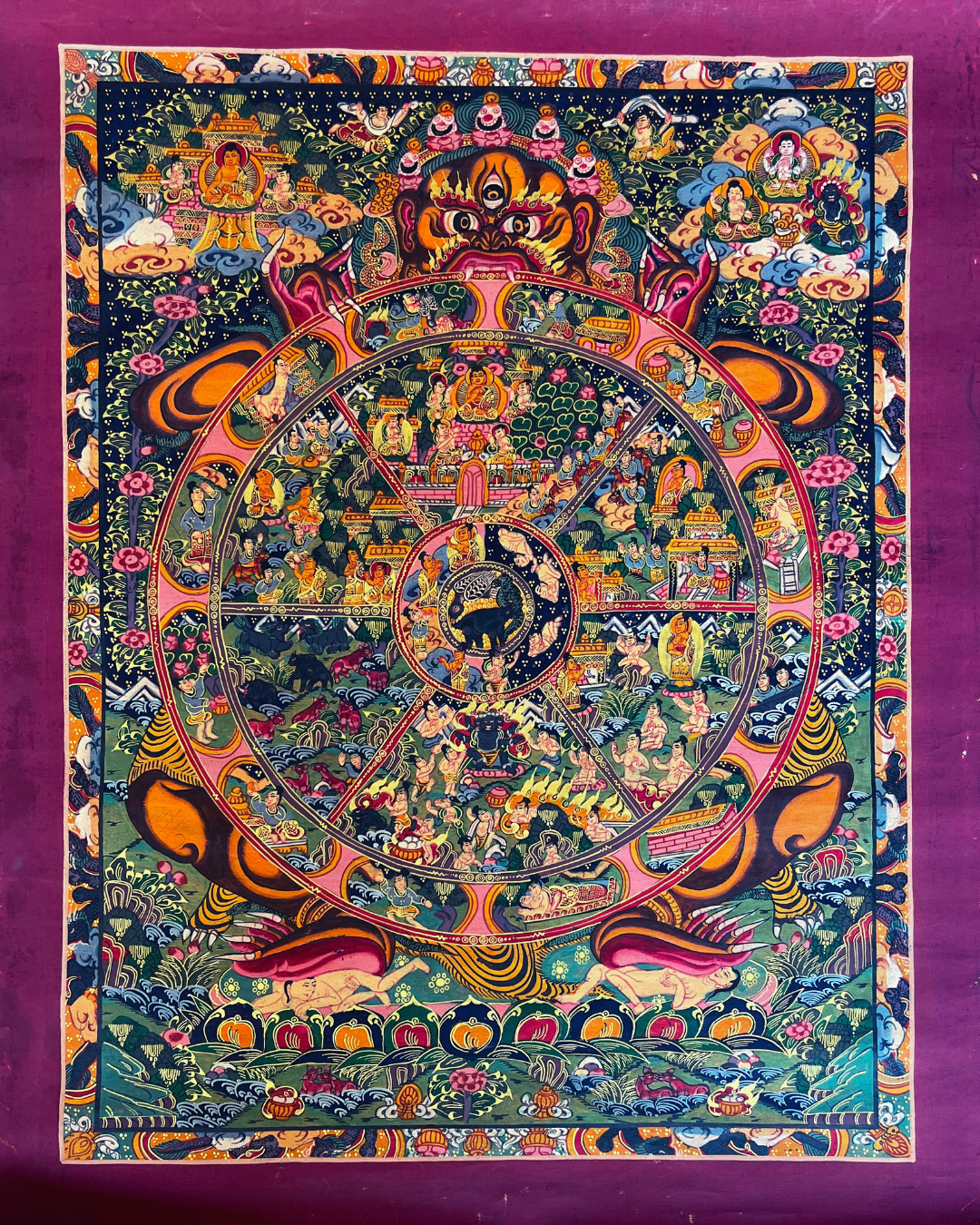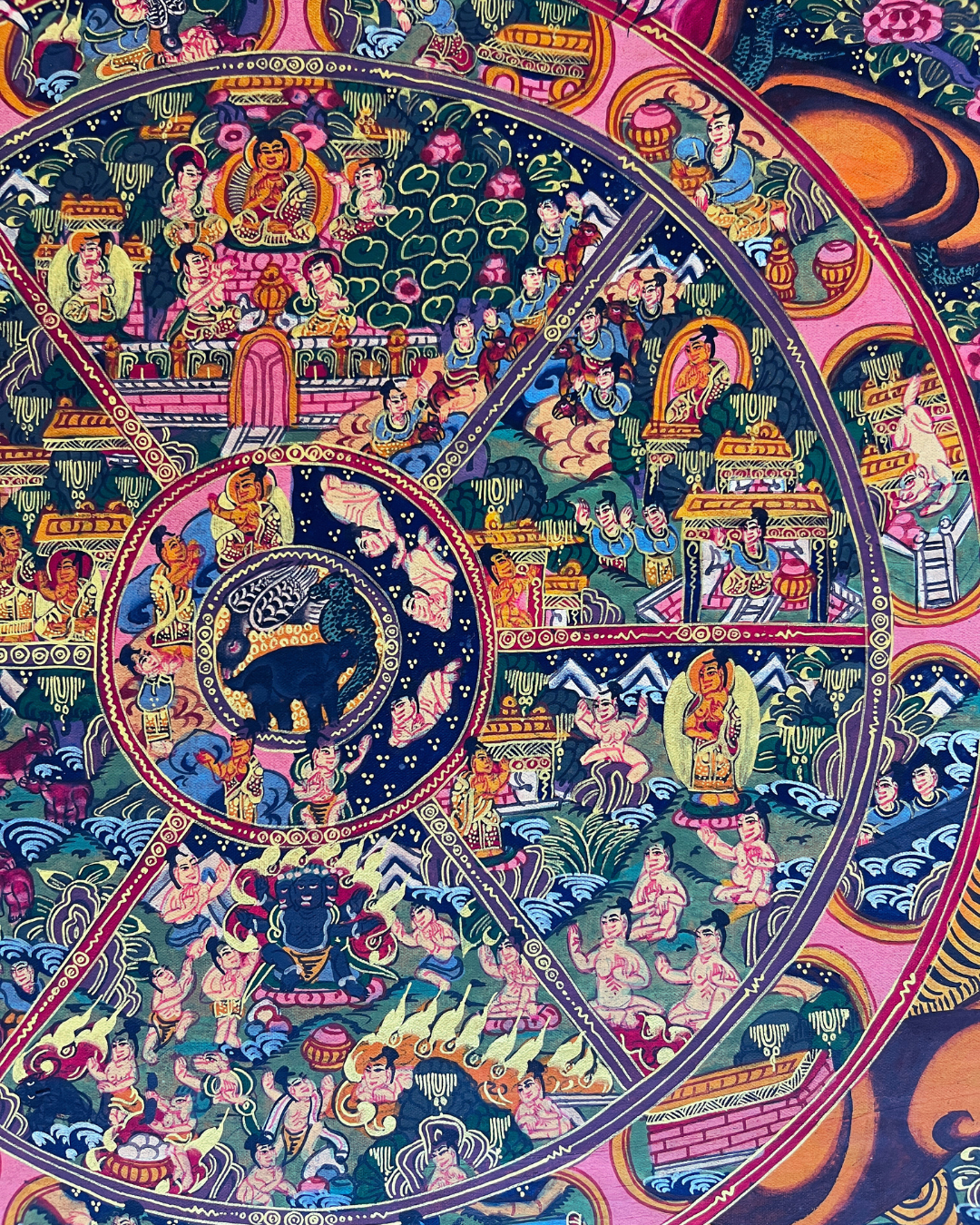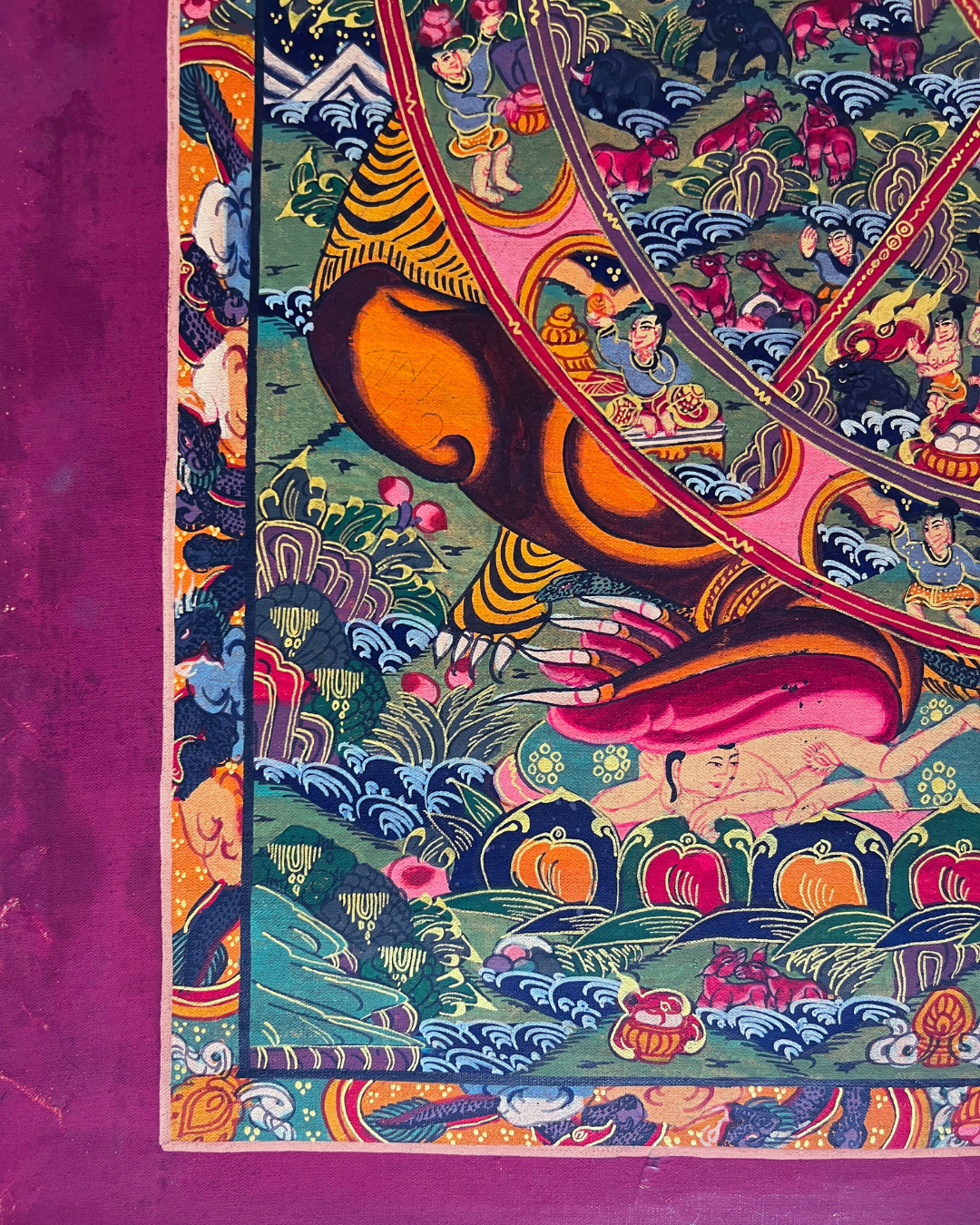Darjeeling Connection
The Wheel of Life (Bhavachakra) Thangka: Mandala of Existence
The Wheel of Life (Bhavachakra) Thangka: Mandala of Existence
Couldn't load pickup availability
Discover the profound teachings of Buddhism with the Wheel of Life Thangka, an intricate representation that captures the essence of the cycle of existence - Samsara - as taught by Shakyamuni Buddha. It was first drawn by the Buddha himself when a king who was his disciple asked what he might present to a neighbouring king as a gift.
Often referred to as the "Bhava Chakra" in Sanskrit, which translates to the circle of worldly existence, this Thangka serves as a visual guide, illustrating essential Buddhist concepts such as the Four Noble Truths, the nature of suffering, and the cycle of Samsara.
Limited Availability: Due to the meticulous craftsmanship involved in creating each thangka, we have limited stock available. Don't miss the opportunity to own this exceptional work of art and spirituality
What is Samsara in Buddhism?
Samsara can be explained as a concept of our cyclic existence, where our soul is confined in the perpetual Wheel of Birth, Death, and Reincarnation. Samsara is a Sanskrit word that translates to “aimless wandering”. Our souls aimlessly wander in the realms of suffering, unless Nirvana is attained. Our ignorance and desires keep us chained to painful realms, and the relentless loop of rebirths and suffering. If one can surrender all attachments, one can break out of this cyclical existence and attain enlightenment, Nirvana.
The Wheel of Life is depicted as a wheel with a hub, spokes and a rim gripped between the jaws of the lord of Death, Yama. Each part of the wheel depicts a different aspect of life by our karmic deeds:
-
At the heart of this Thangka, the hub of the Wheel, is a detailed mandala, portraying the interconnectedness of the mind's delusions through central symbols — a pig (ignorance), a snake (anger/hatred), and a rooster (desire/attachment). This depiction illustrates how these three delusions trap us within the cycle of suffering, emphasizing the importance of enlightenment for liberation. These three delusions are the Three Poisons of Samsara
-
An inner circle around the hub illustrates the effects of our karmic actions. It is in two halves, the left half depicting virtuous actions and the right unwholesome actions. The people on the left are facing upwards, destined for higher, happier births and the people on the right face downwards to births in misery. This intermediate state between life & date is called Bardo.
-
The spokes divide the Wheel into 6 sections - these reveal different destinies as human beings, gods and demigods – the 3 higher, happier and more favourable realms – and animals, hungry spirits and denizens of hell – the 3 lower realms characterised more by intense suffering. These are the 6 Worlds of Samsara:
i. God Realm (Deva Realm)
ii. Demi-God Realm (Asura realm)
iii. Human Realm
iv. Animal Realm
v. Hungry Ghost Realm (Preta Realm)
vi. Hell Realm (Naraka)
Each section vividly illustrates the unique experiences and sufferings inherent to these realms, enriching our understanding of the consequences of our actions and desires.
4. The outer circle or the rim of the wheel features the 12 Links of Interdependent Factors (Dvadasanga Pratityasamutpada), a crucial aspect of Buddhist philosophy. This chain of cause and effect outlines the process leading to suffering, reinforcing that everything is interdependent. Each part serves as an example of the causal chain of existence. The twelve interconnected factors are as follows:
i. Ignorance (Avidya): Ignorance is represented by an old and blind person
ii. Volitional Action (Sankhara): Volitional Formations have been portrayed by a potter
iii. Consciousness (Vijnana): Consciousness arises in dependence on volitional formations, it is portrayed by a monkey who is at the top of the tree.
iv. Name and Form (Namarupa): Represented by the two men rowing a boat on the water. Name and form refer to the mental-physical aspects of existence.
v. Six Sense Bases (Sadayatana): The six senses are usually represented by the 6 windows of an empty house
vi. Contact (Sparsa): Contact is represented by a woman and man embracing each other, it refers to the coming together of the sense faculties, sense objects, and consciousness. It is the meeting point where perception and experience occur.
vii. Feeling (Vedana): Feeling is represented by a man hit by an arrow, he is the subjective experience of pleasure, pain, or neutrality that arises in response to contact.
viii. Craving (Trishna): A man indulges in alcohol represents a craving arises as a result of pleasant or unpleasant feelings.
ix. Grasping (Upadana): A man grasping a fruit from a tree refers to the clinging or attachment to objects, experiences, beliefs, and identities.
x. Becoming (Bhava): Becoming has been represented by a pregnant lady.
xi. Birth (Jati): Birth refers to the physical or mental birth of a being into a particular realm of existence.
xii. Aging and Death (Janamaraṇa): Aging and death are unavoidable parts of life in Samsara. They represent the conclusion of the birth process and the eventual end of life. The cycle of dependent origination is completed when death and aging lead back to ignorance.
Crafted with artistry and devotion, the Wheel of Life Thangka encapsulates the Buddha's teachings on suffering and the possibility of transcendence. It serves not only as a beautiful decoration but also as an educational piece, inviting viewers to reflect on their life’s journey towards enlightenment.
Perfect for spiritual seekers and art collectors alike, this Thangka embodies the hope of reaching a state of Nirvana, represented by the serene Amitabha Buddha in the upper right corner, symbolizing the ultimate liberation from the endless cycle of rebirth. Bring home this extraordinary piece of art and wisdom to enhance your personal space or to serve as a thoughtful gift for someone on their spiritual path.
Care Instructions
Care Instructions
Materials
Materials
Specially treated cotton canvas; Paints made from stone minerals
Dimensions
Dimensions
22" (l) x 17.5" (b)
Country of Origin
Country of Origin
India











